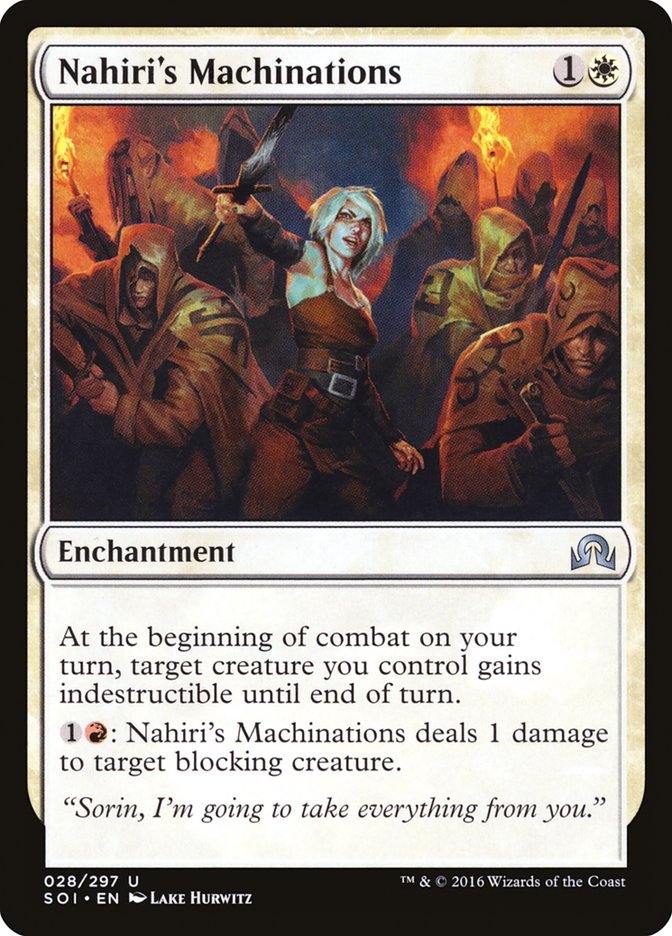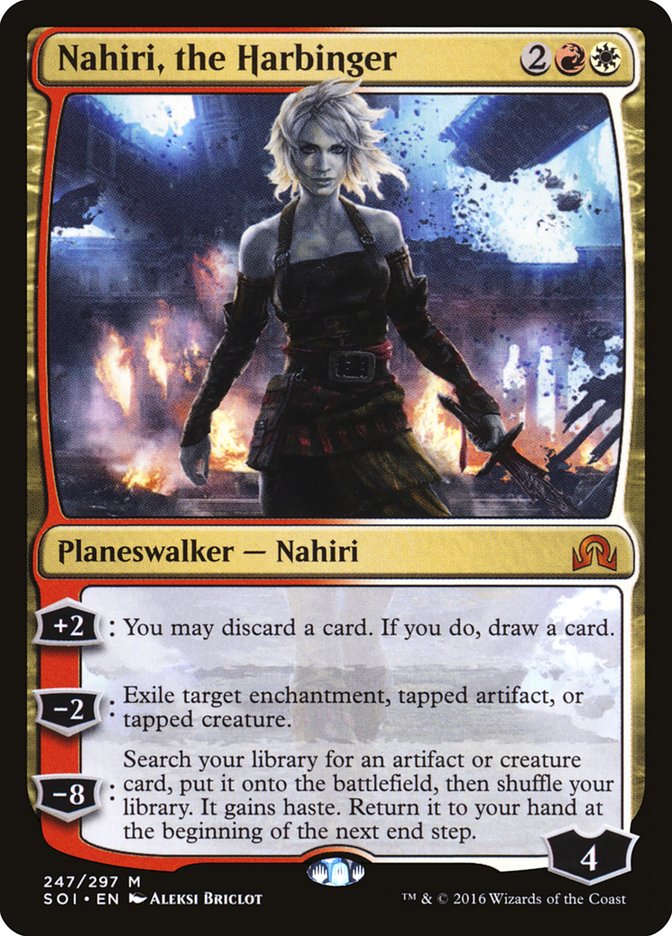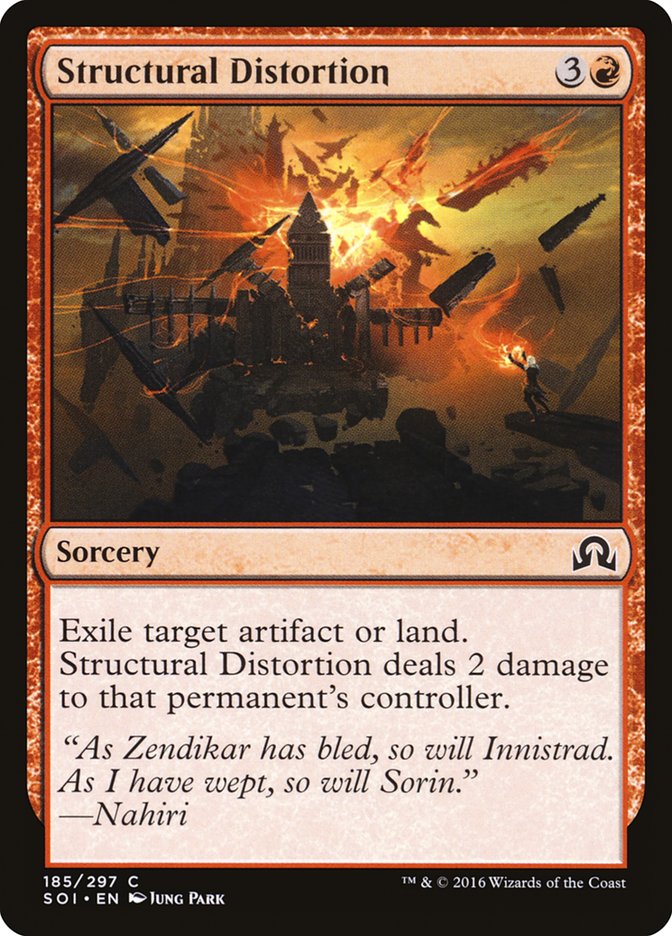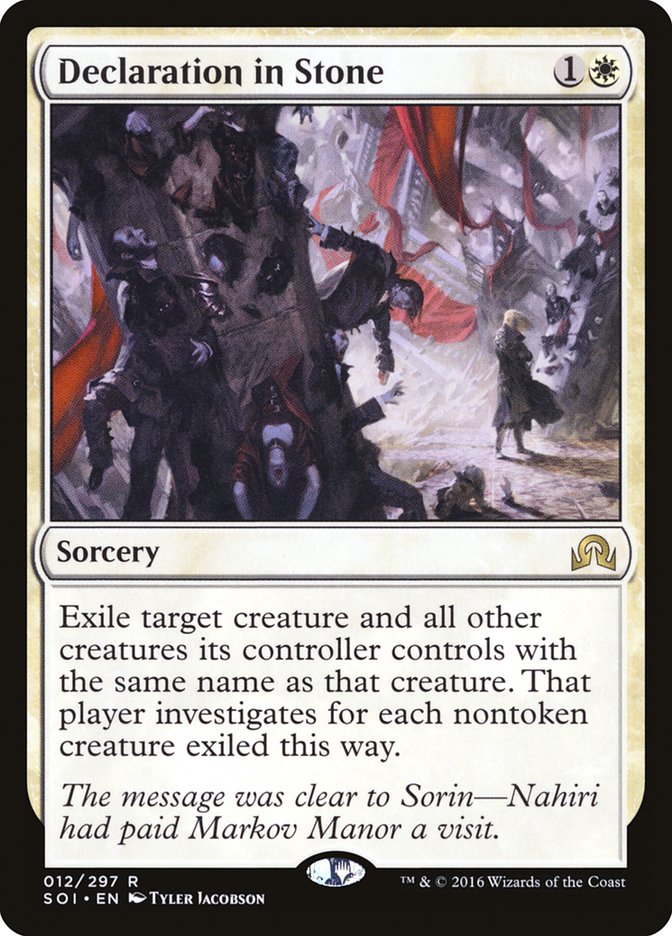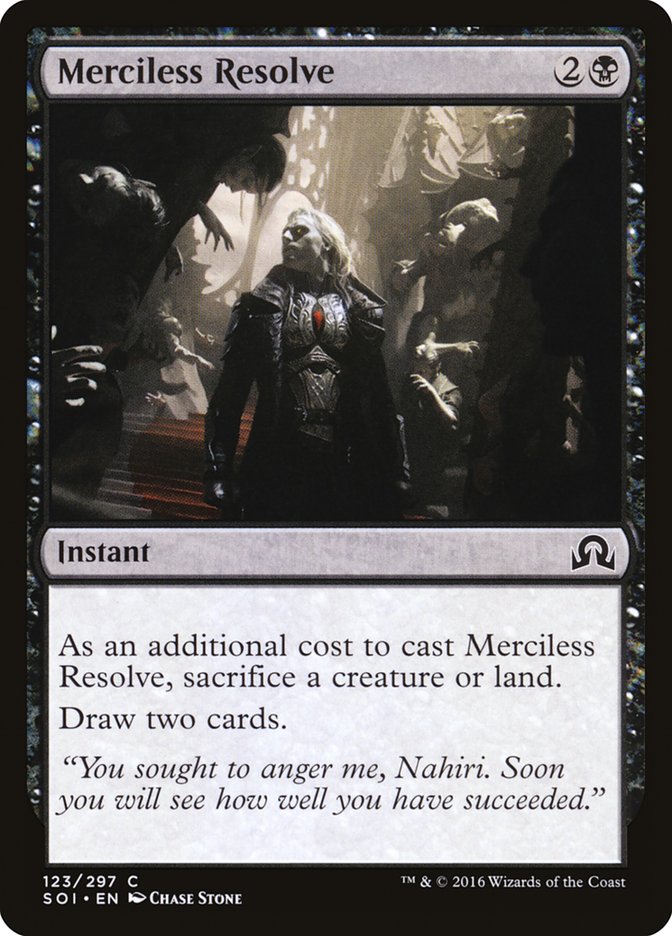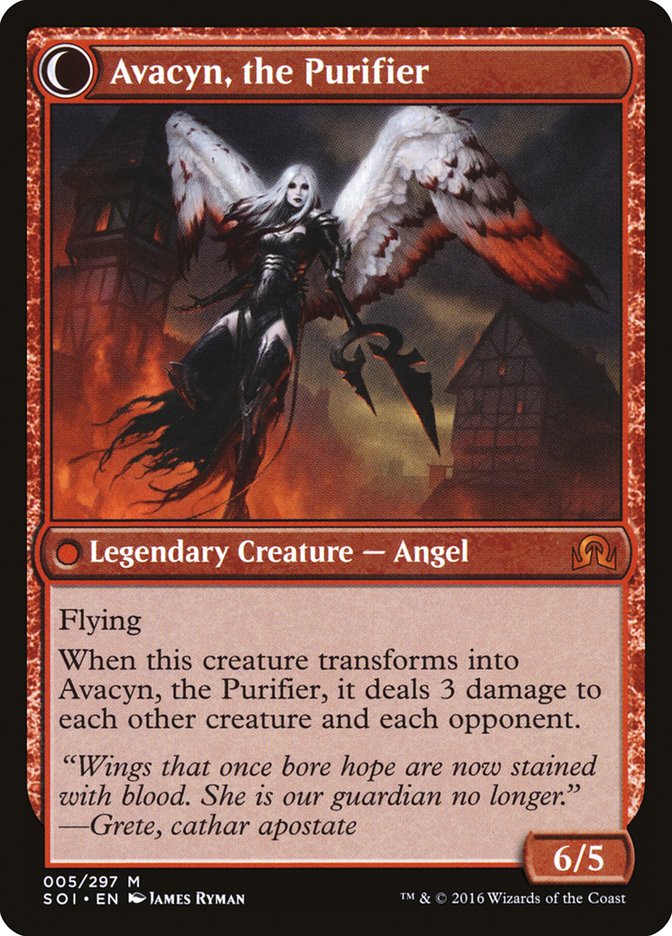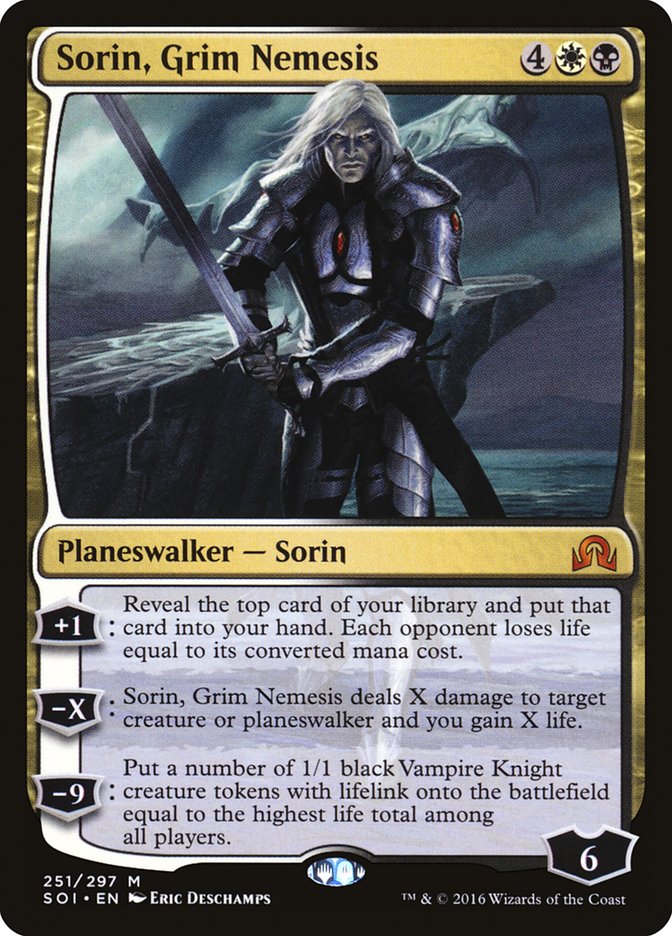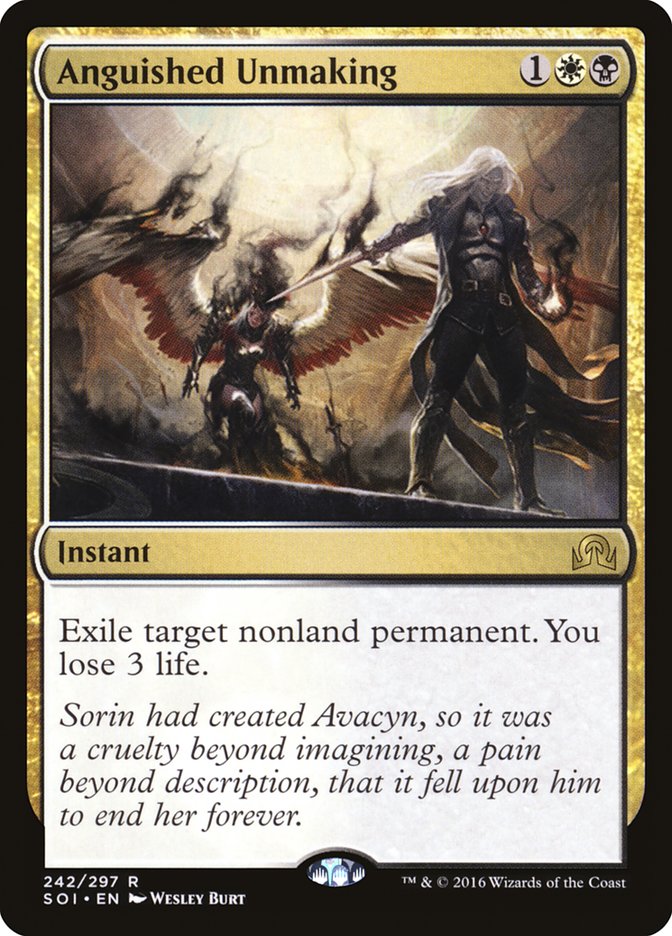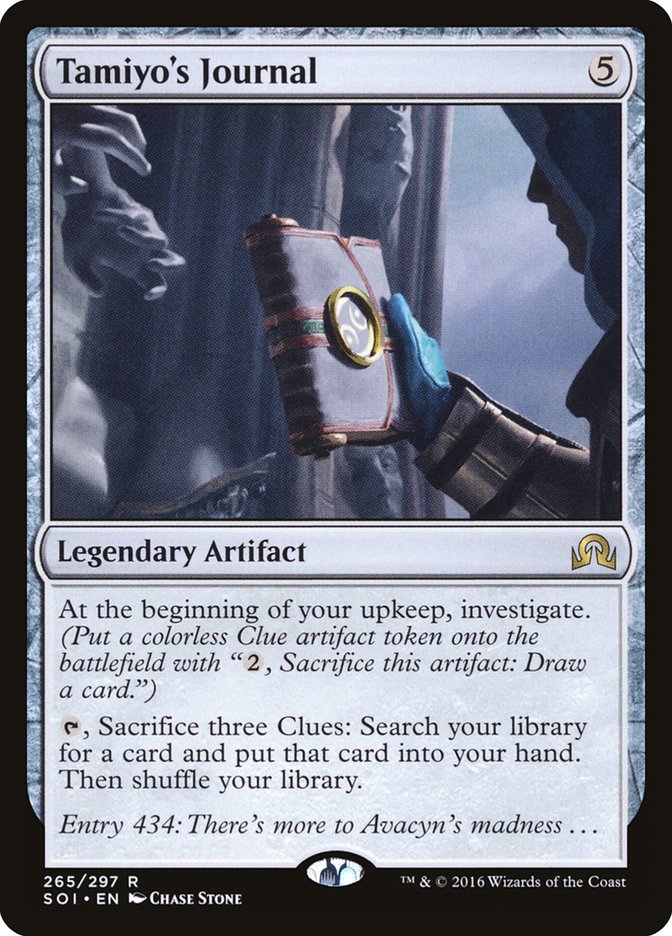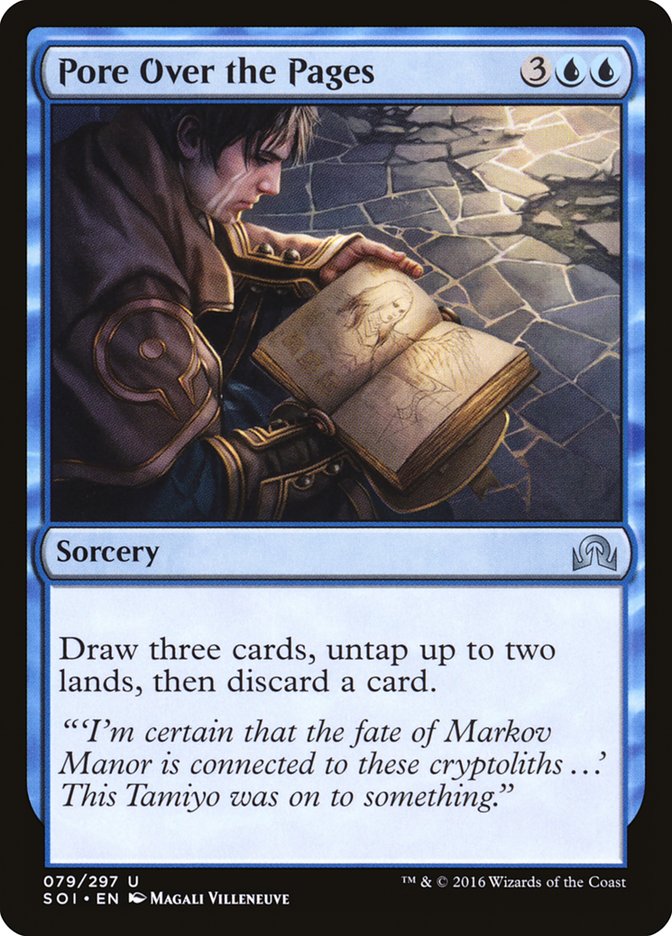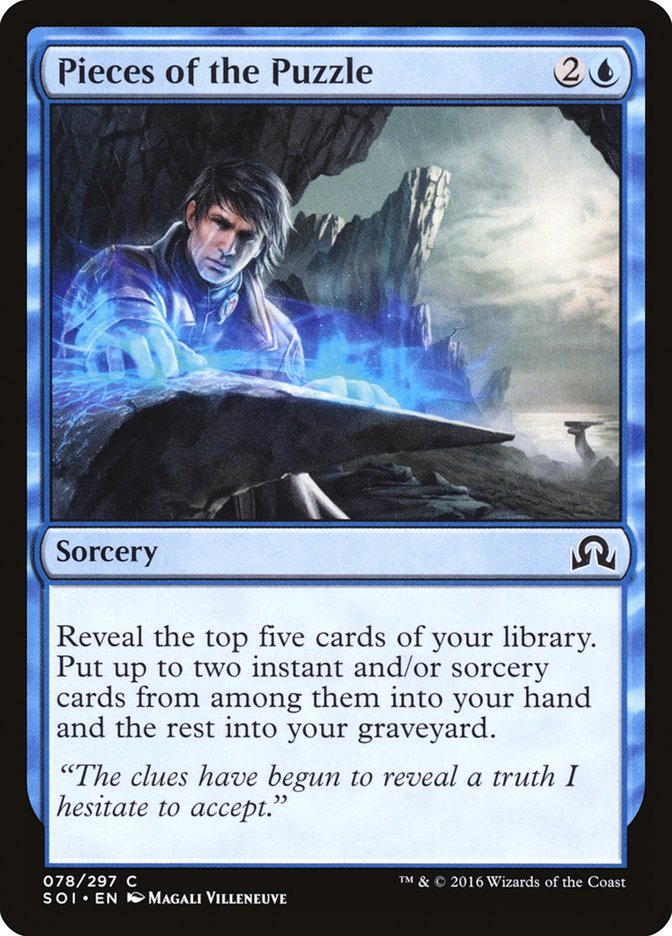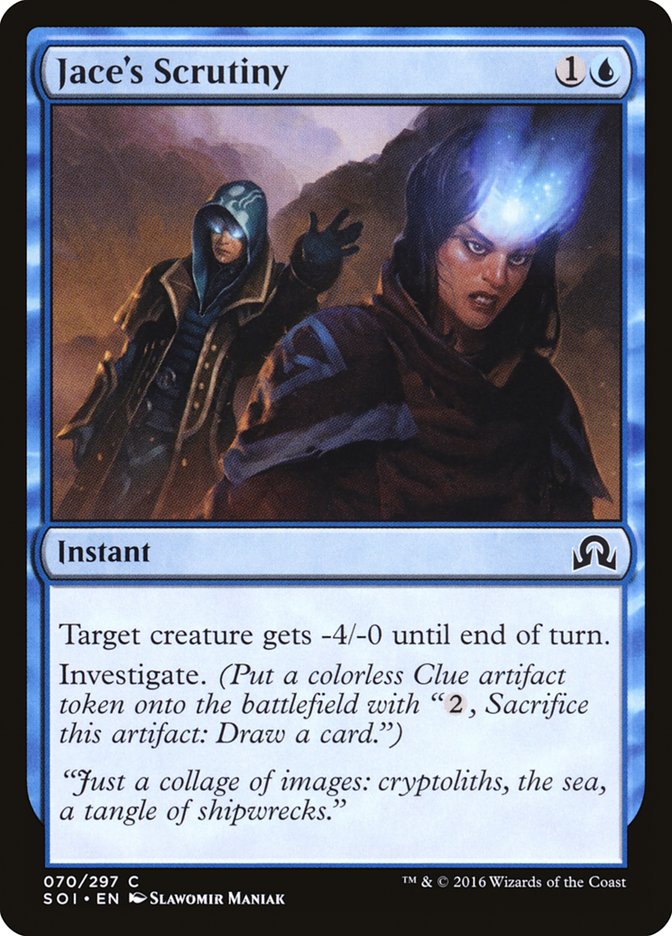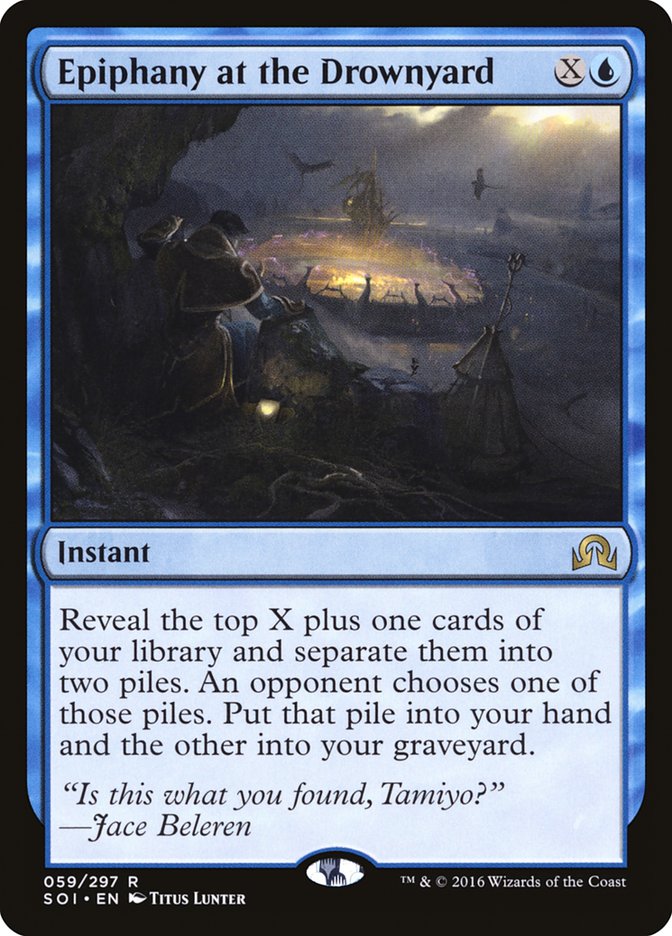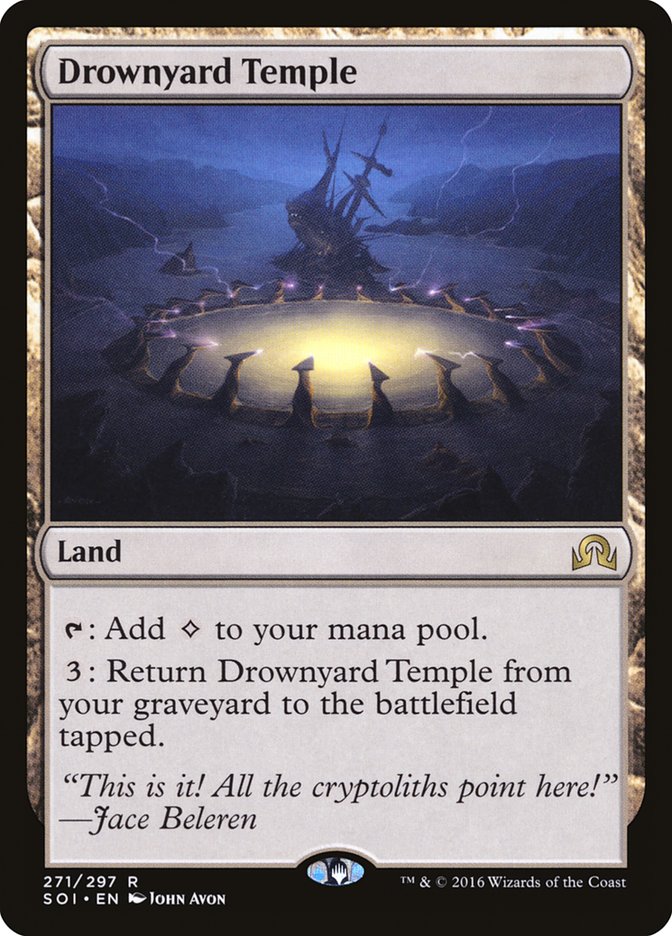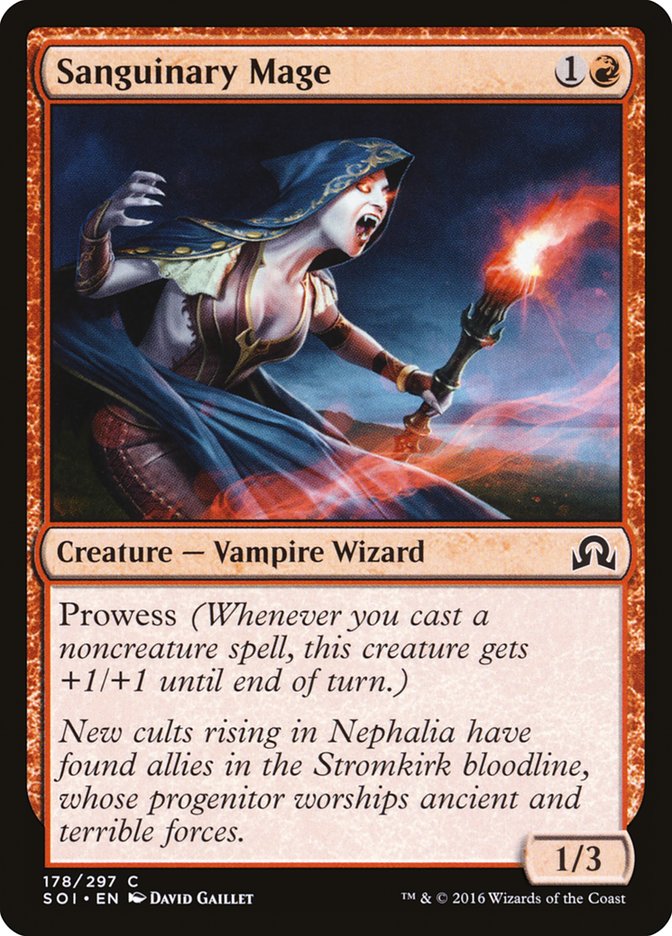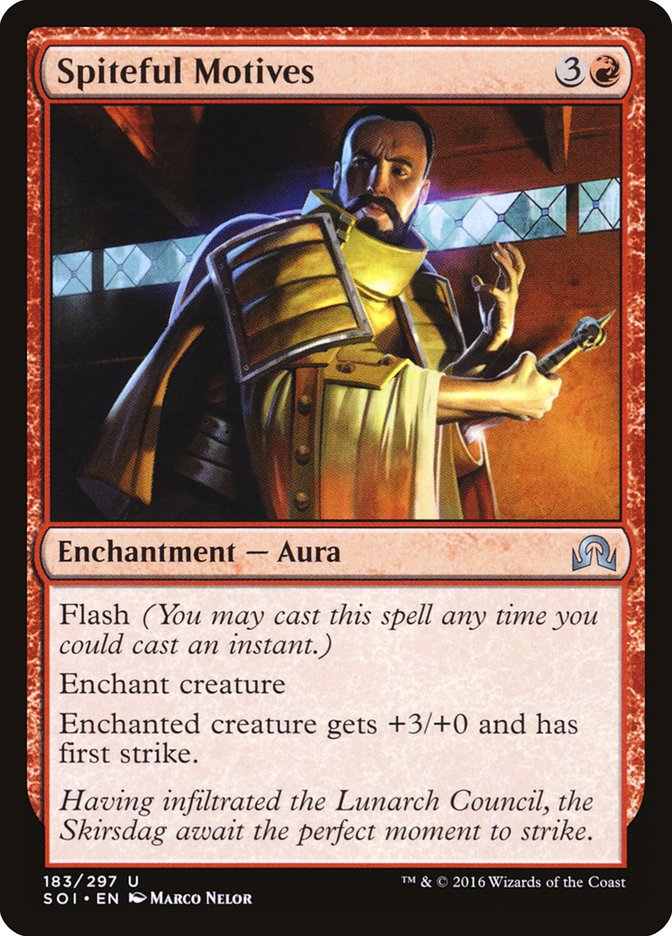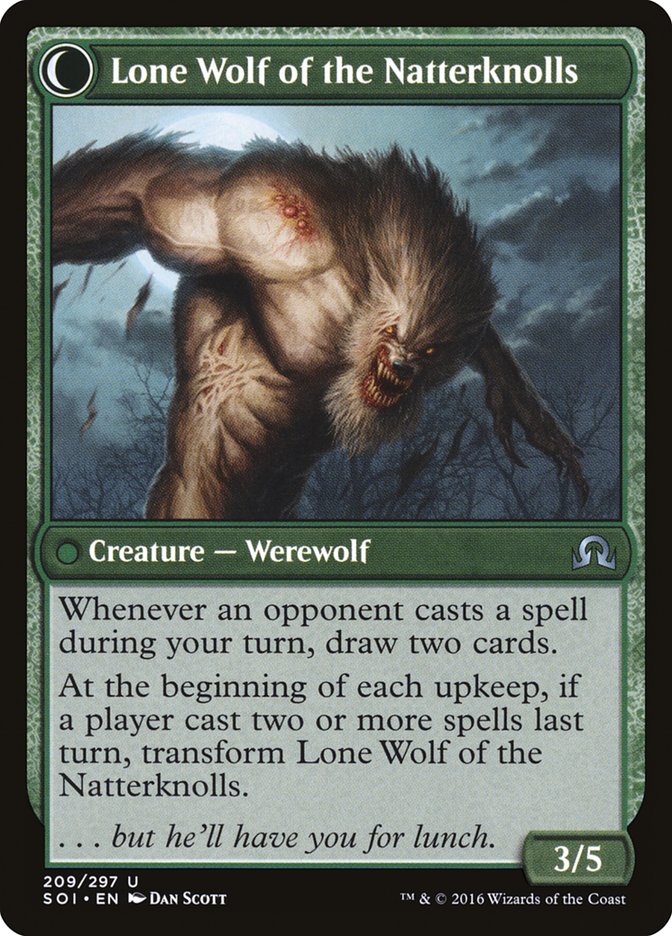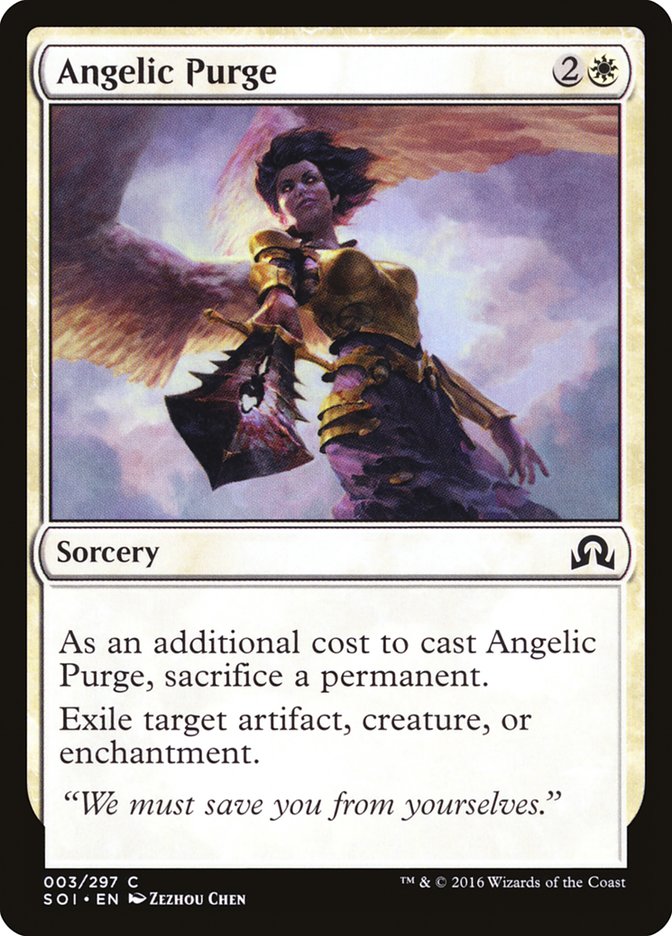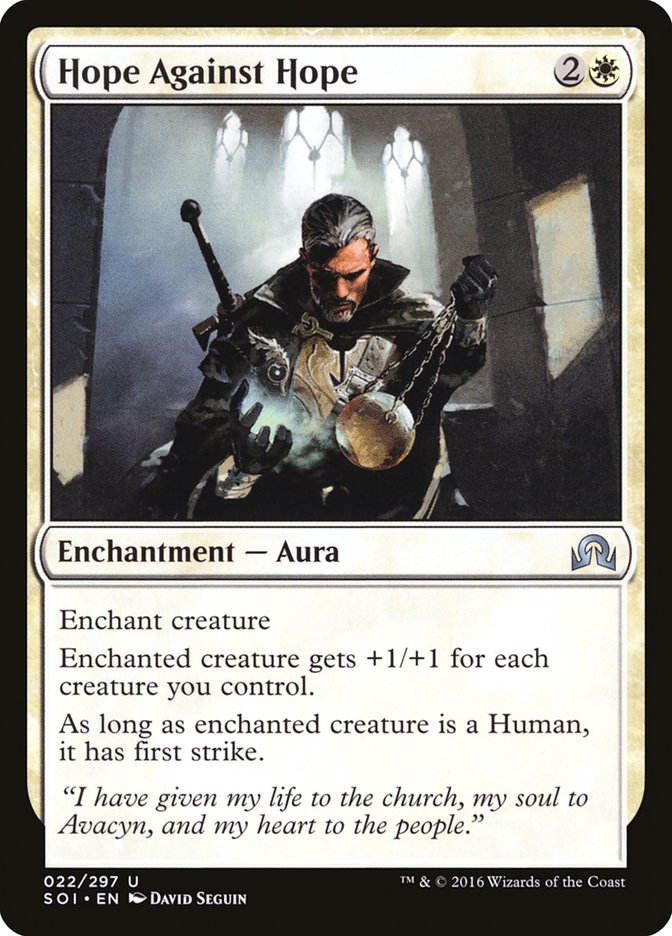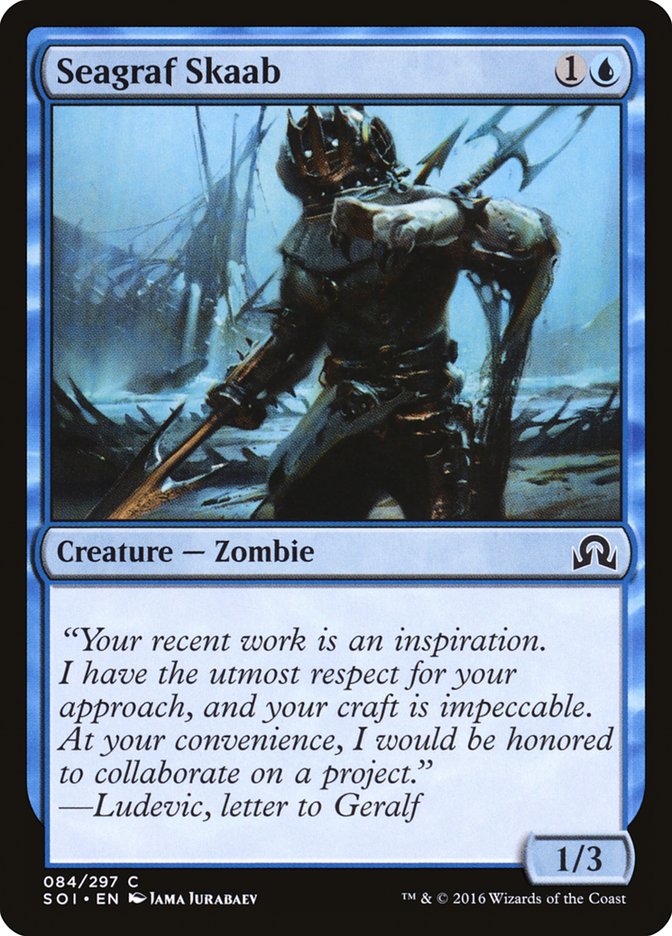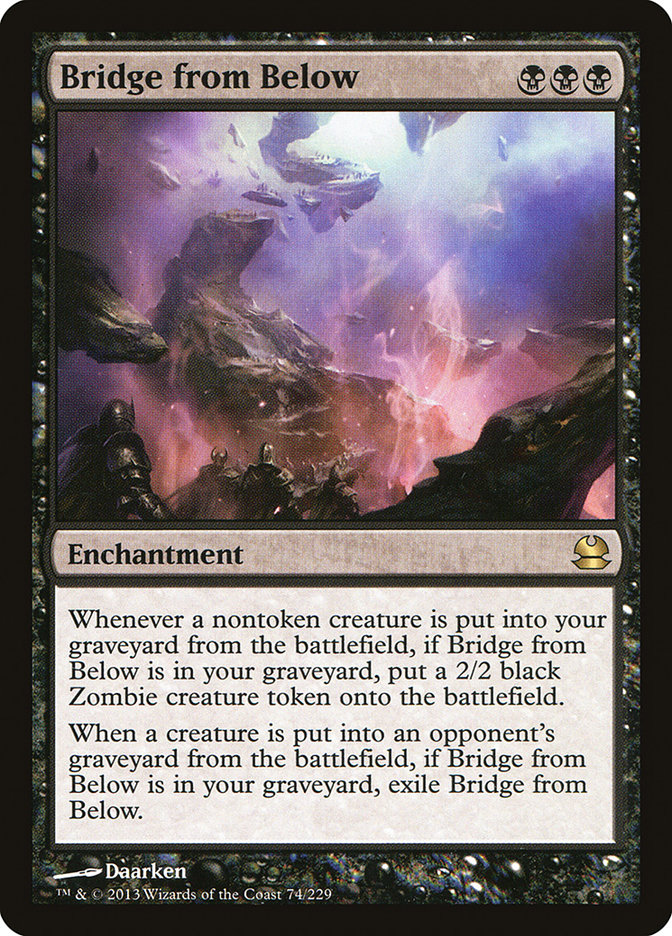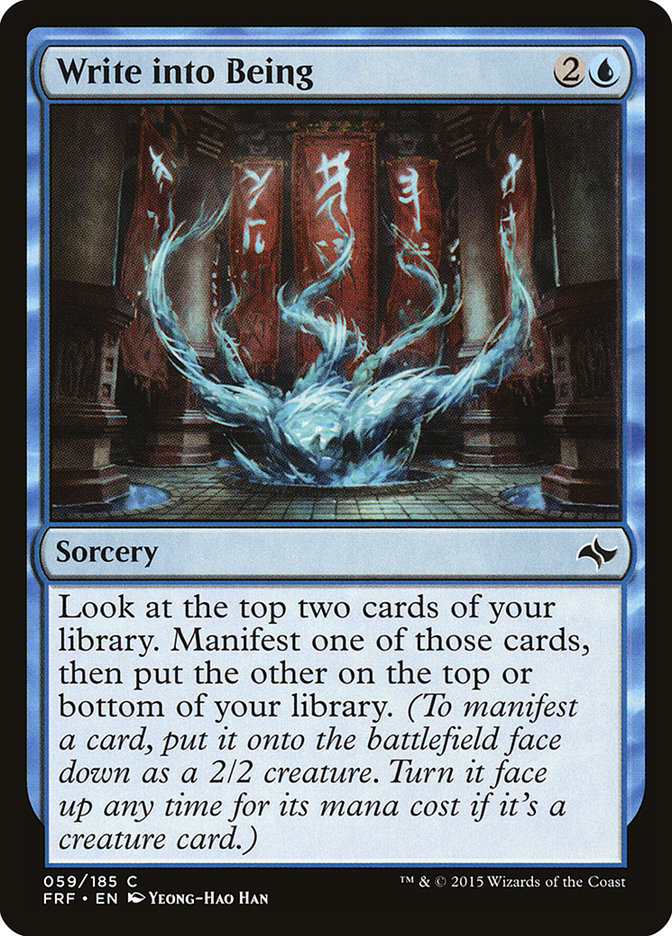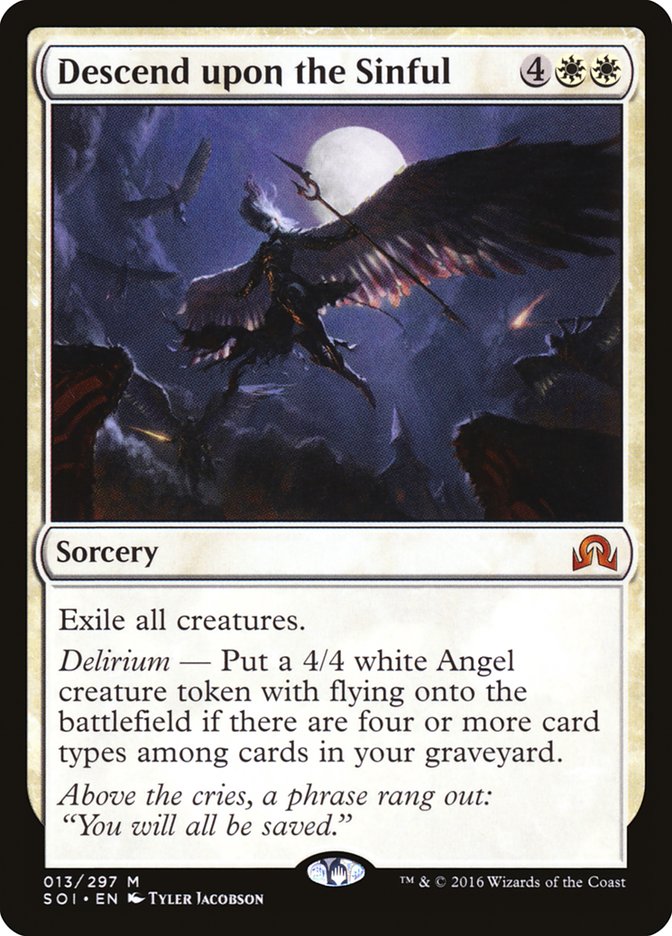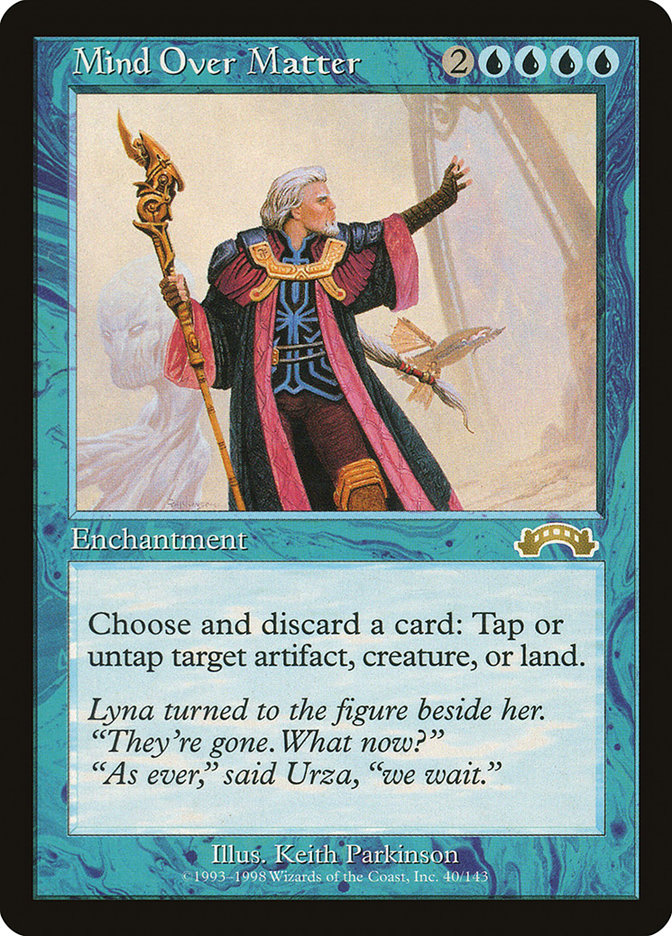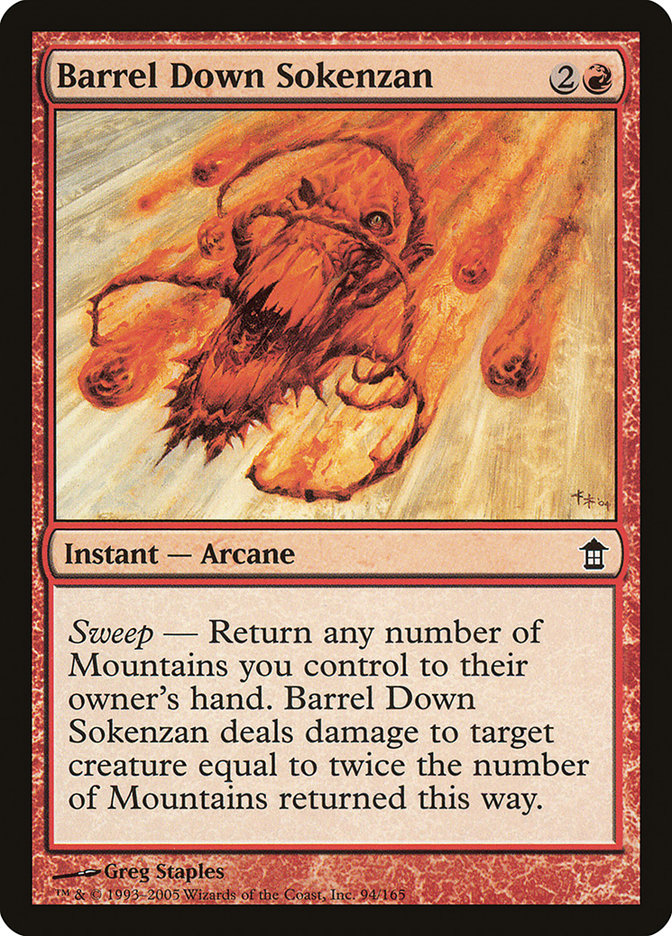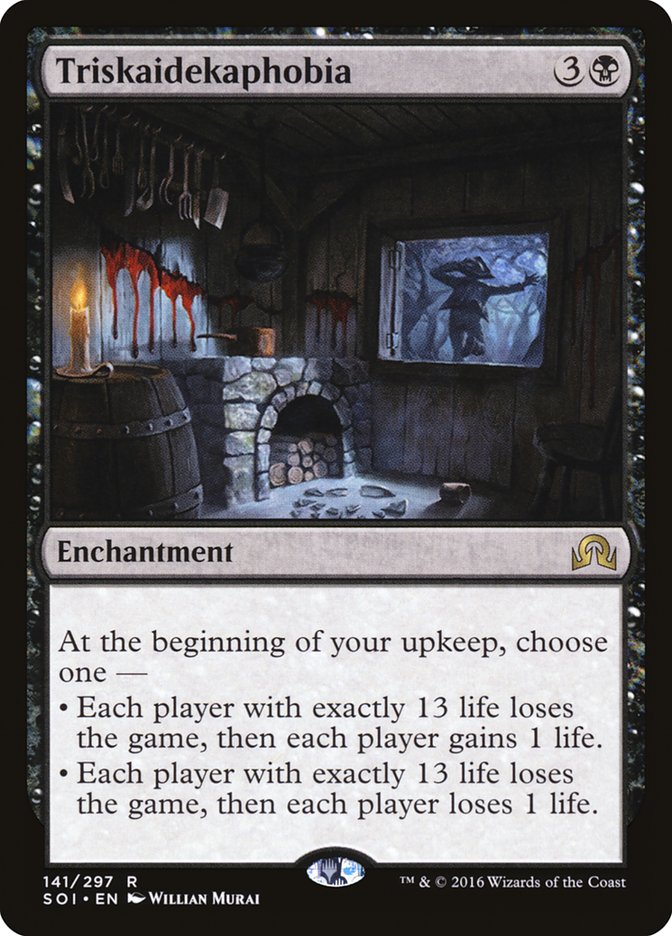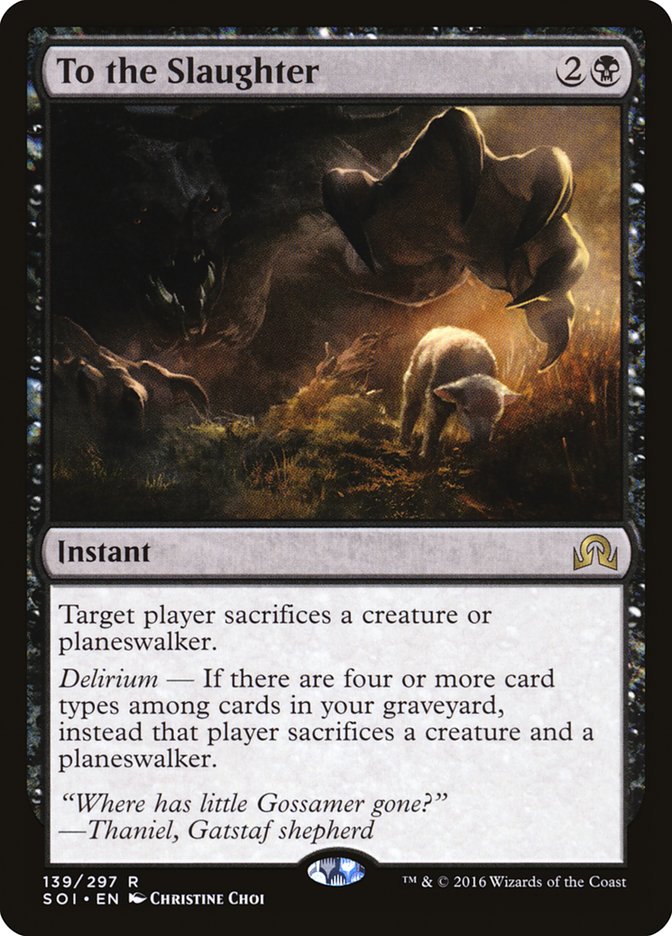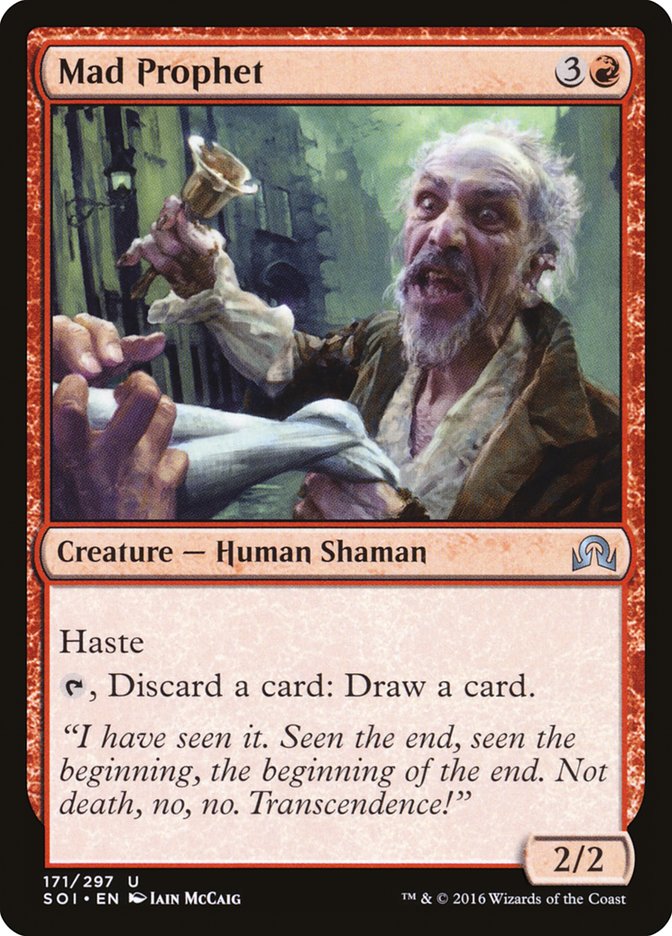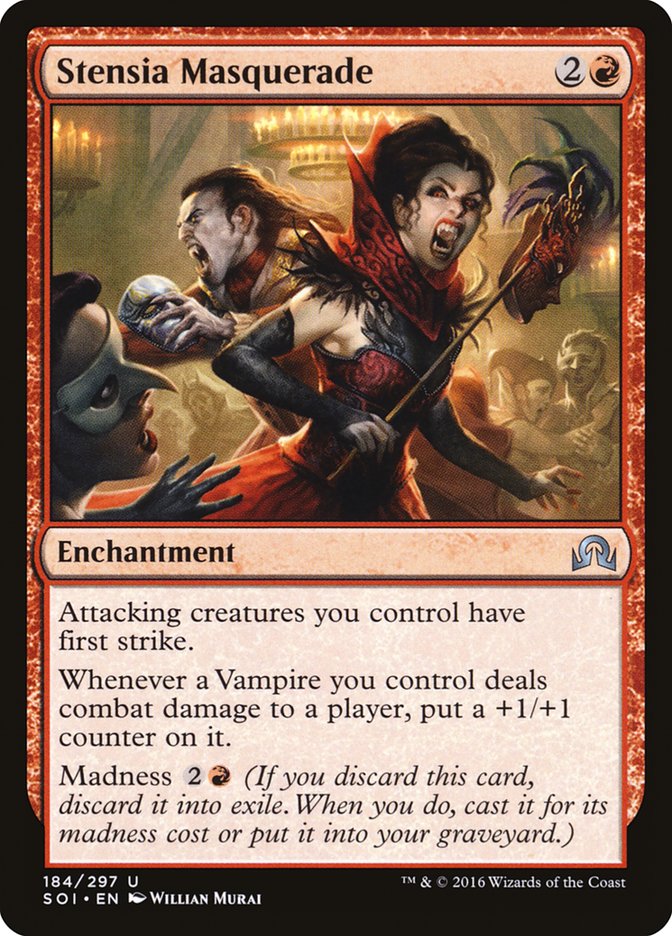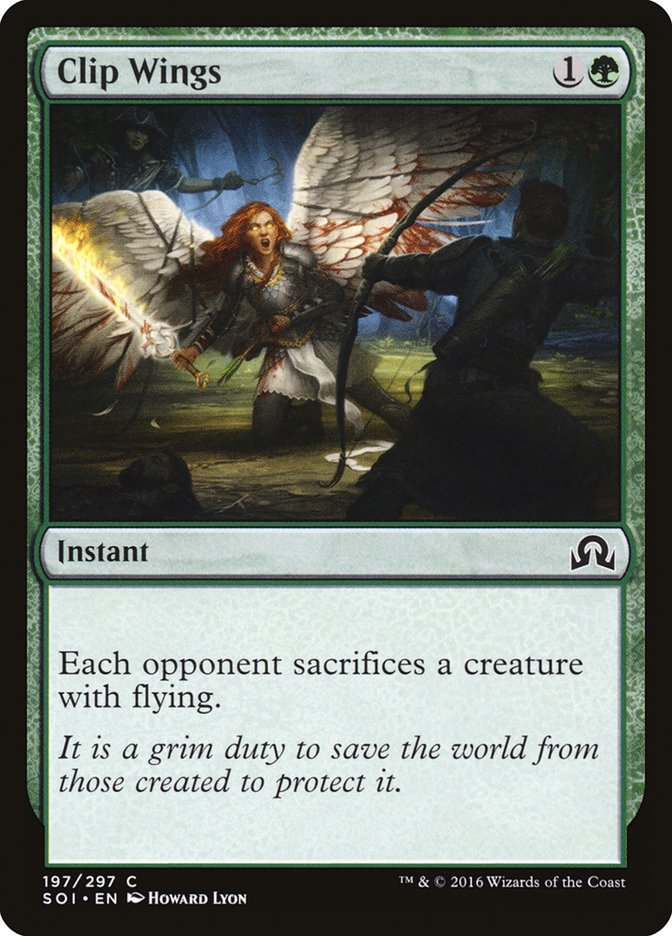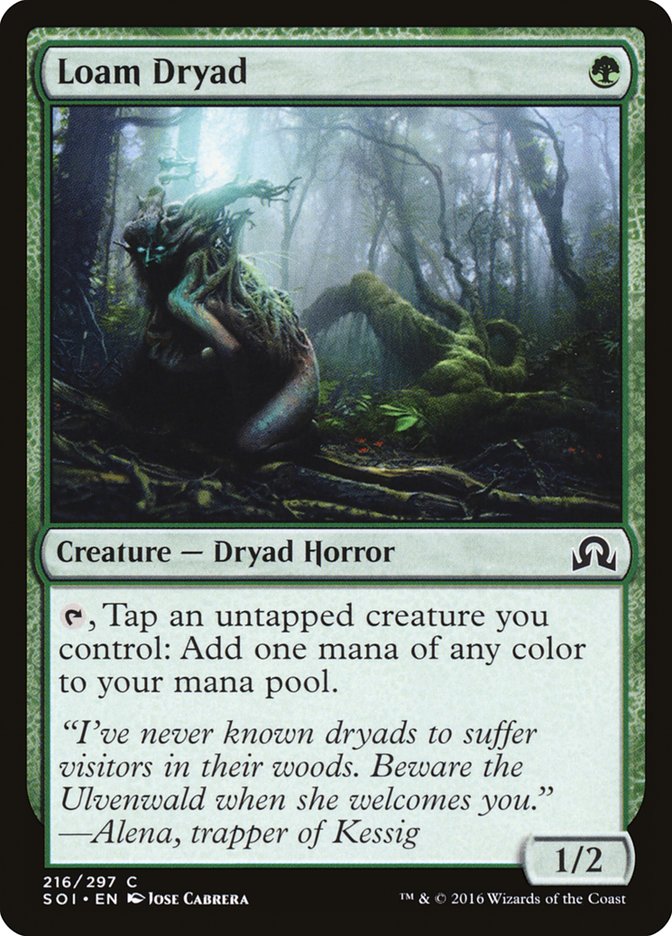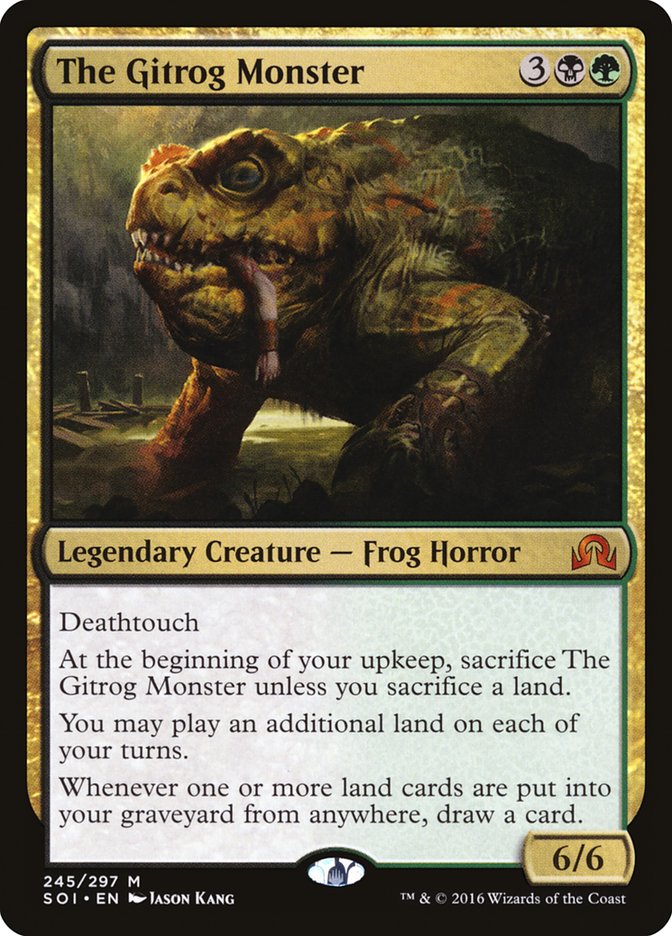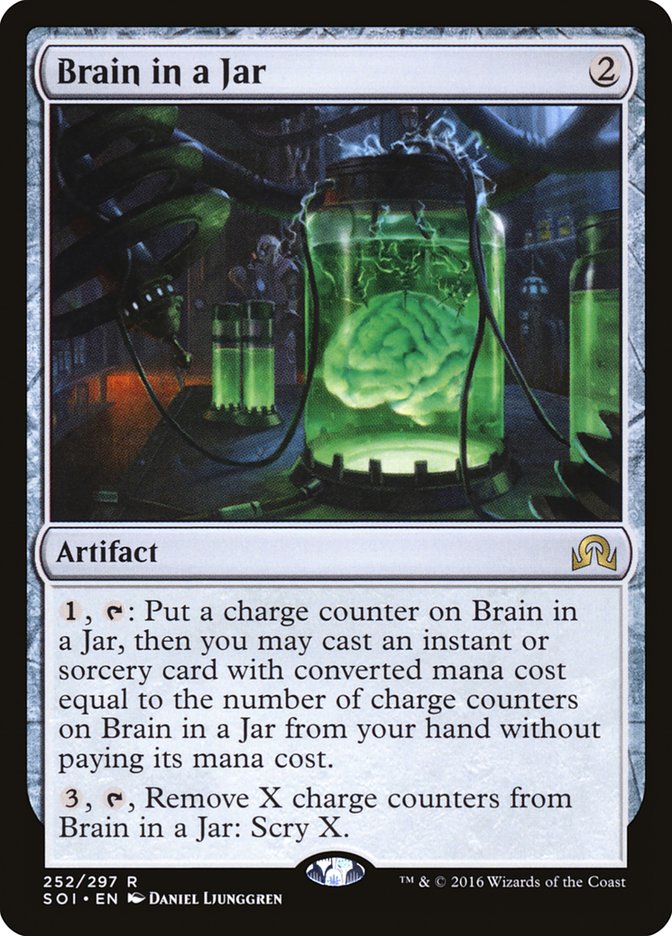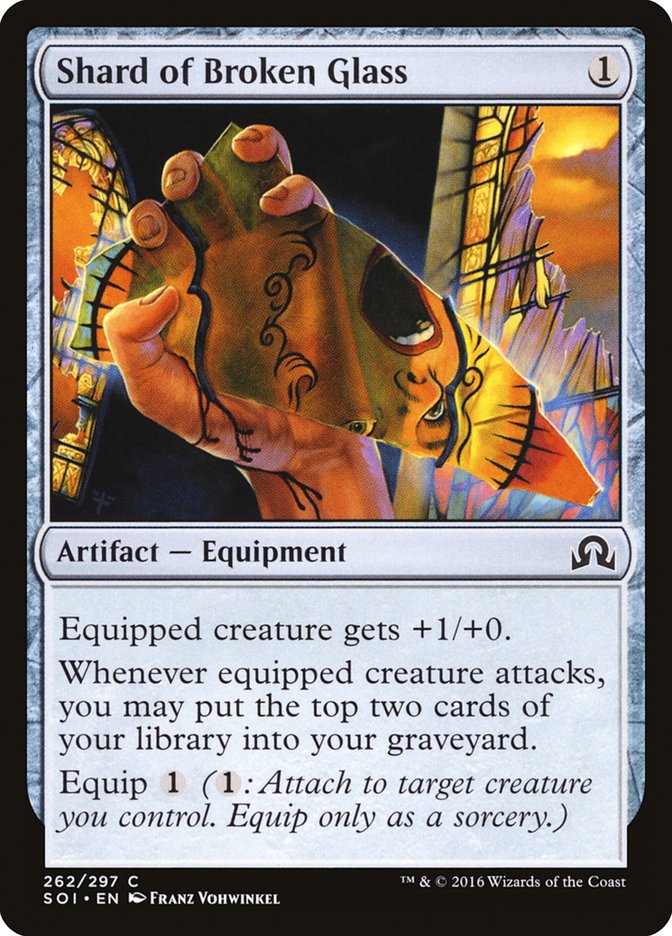I’ll say this for Shadows over Innistrad: it drew me back into competitive Magic, or at least DCI-sanctioned Magic. The Prerelease was my first tournament since August.
I wanted to experience the set, and I didn’t want to wait a week. That’s most of it.
Overview: Gothic Horror Meets Magic, Take Two
Shadows over Innistrad may have its flaws, but for a flavor fanatic like me, there are few planes that can match Innistrad’s mischianza of Gothic horror and schlocky film tropes, all filtered through the signature Magical lens.
For better or worse, the flavor of Magic needs an anchor in what its audience already knows and loves. This anchor can be almost anything, such as high fantasy (Limited Edition Alpha), horror (Innistrad), the Italian Renaissance (Conspiracy), or ancient Greek myths (Theros). When a suitable anchor melds with Magic (as Hollywood types might say, “X meets Y,” as in “Theros is Greek mythology meets Magic”), the story folks at Wizards of the Coast usually deliver a resonant block that is fun to look at and read about; playability lies in the hands of others.
An unsuitable anchor, by contrast, usually leads to creative failure. Kamigawa block tried using Shinto religious practice (messed around with by Western outsiders) as an anchor, with more resonant Samurai and Ninja tropes pushed into secondary roles. Lorwyn had an extremely narrow “sunny” slice of fairy tales as its anchor, creating an overdose of twee that the grimdark Shadowmoor could not correct.
Time Spiral’s anchor was…Magic itself, creating the game’s equivalent of literary fiction, beloved by a few insiders and overwhelmingly rejected by the masses. Perhaps government grant recipients and the independently wealthy can get away with that, but Magic is not art for art’s sake. Magic is a game. It and all its components have a purpose. Every card design, every flavor text, every land painting is a commission. Value is inseparable from function.
And in the world of business and mass marketing that Magic must exist in, where there is a hit, there will be a sequel. Though Innistrad block ended with the plane seemingly righting itself in Avacyn Restored, no setting so beloved and so lucrative could be left alone.
Story Cards: Nahiri, Sorin, and the Jacetice League
So far the Shadows over Innistrad storyline seems rather fragmented. We have several different plot strands, but chances are we’ll have to wait for Eldritch Moon to see how they all twist together.
Nahiri: Unexplained Bad Blood
The most suspicious and frustrating part — for me, at least, and so far — is how Nahiri, the ostensible antagonist of Shadows over Innistrad, hasn’t been allowed to speak much for herself.
To be sure, we have statements-of-purpose in the flavor texts of Nahiri’s Machinations and Structural Distortion, but this story is literally millennia in the making. Six millennia before the Eldrazi were set free, they were imprisoned by Ugin, the Spirit Dragon; Sorin Markov; and Nahiri, the Lithomancer. Roughly one millennium before the successful Eldrazi jailbreak, Nahiri thwarted one on her own after not getting an answer from either Ugin or Sorin, later going to look for Sorin.
Near the end of “Stirring from Slumber,” about Nahiri’s singlehanded defense of Zendikar, James Wyatt wrote the following key passage from Nahiri’s point of view:
“She would go and find him, wake him up if she needed to, remind him of her and Zendikar and the friendship they had once shared, remind him what it was to live, to feel, to care. She had saved Zendikar, and now she would save him. And then she would return and walk among her people again, she would teach and laugh and love again, and it would matter again. It would all matter.”
Clearly things didn’t turn out that way. When Sorin went looking for Ugin and found him wrapped in a cocoon of hedrons (in the Dragons of Tarkir timeline), his first thought was that Nahiri had killed Ugin. Later, after Ugin proved to be alive, the draconic planeswalker brought up Nahiri himself and promptly called out Sorin on his evasiveness.
Clearly there’s “Bad Blood” between Magic’s pale, white-haired planeswalkers. The details are frustratingly short, however, and there’s plenty left unknown. For example, take the destruction of Markov Manor, its aftermath seen on Declaration in Stone and Merciless Resolve.
Sorin takes it for granted that Nahiri was trying to send him a message. That could well be true. On the other hand, it’s easy to construct an alternative explanation: for example, what if Nahiri went looking for Sorin at his ancestral home, didn’t know he was unwelcome there, and acted in self-defense against a bunch of insulted, hungry Vampires?
There are too many unknowns to draw firm conclusions about Nahiri and Sorin. Until Nahiri gets to speak for herself on what went down between them, I’m withholding judgment.
Sorin: Losing What He Loved
Meanwhile, Innistrad native Sorin Markov has returned to his home plane, possibly for the first time since Avacyn got out of the Helvault, only to find things gone haywire. Avacyn, his creation made with a piece of his own soul, has gone from protector to purger, turning against the Humans she was meant to preserve. At some point he goes to Markov Manor, finding the Declaration in Stone and knowing instantly who did it: Nahiri.
Also at some point (the cards don’t suggest a specific timeline), Sorin decides Avacyn is beyond correcting and destroys her. Unseen in the card art (but seen in the larger Wesley Burt illustration), Jace and Tamiyo are there to witness the act.
The Jacetice League: Jace Investigates
While most of the newly formed Gatewatch recovers on Zendikar, Jace jets off to Innistrad to find Sorin Markov. His first stop, after raiding the closet of Tom Ross for a sweet leather jacket, is his ex’s place, looking for Liliana and finding something less than help; later on, if Liliana’s Indignation is to be believed, Jace will make a return trip to Liliana’s pad with even more disastrous results.
As I write this, the most recent Magic Story entry is “The Mystery of Markov Manor,” in which Jace snoops around said manor, goes on a total mind-trip, and walks out with Tamiyo’s Journal.
From there, he starts investigating, following clues and meeting Tamiyo somewhere along the way. It’s not entirely certain when he interacts with Tamiyo, other than “sometime before Avacyn bites the dust,” but it’s clear that Jace follows the clues to find … something … at the Nephalia Drownyard.
What will Jace find there? Other cards hint at some sort of cult movement centered on worshipping a force of the sea, as suggested by Sanguinary Mage, and which may or may not be encouraged by Nahiri. This is to be kept separate from the Skirsdag cults that are looking to infiltrate the Lunarch Council ruling the Church of Avacyn.
In short, there’s a lot going on. It’s looking more and more as if the set name Shadows over Innistrad is a deliberate homage to H.P. Lovecraft’s The Shadow over Innsmouth, a book whose main horror source comes from beneath the sea. Oh, yes, and there’s the matter of Tamiyo’s journal numbers and the contorted wording on some of the Clue tokens, which, according to a Reddit theory I dismissed at first but find more and more compelling, may hint at something, shall I say, Eldritch on the way.
And that’s not even getting into the why of the Angels turning on the Humans (Nahiri’s influence? Someone or something else’s?) or the Werewolves, which seem more like window dressing than anything else.
Shadows over Innistrad has thrown a lot of balls in the air. It’ll be interesting to see how Eldritch Moon catches them.
Flavorful Highlights and Lowlights
Shadows over Innistrad is one of the most flavor-rich sets in years, almost too rich, like following up fettuccine Alfredo with a flourless chocolate cake.
For each category on the official Shadows over Innistrad Card Image Gallery, I’ll select flavor standouts and stumbles, one highlight and one lowlight, with honorable or dishonorable mentions as I see fit.
Double-Faced Cards
Archangel Avacyn / Avacyn, the Purifier is a remarkable flavor hit. On her front face she’s a protector, swooping in to save the day, only to turn wrathful after she fails.
Other notable double-faced cards include the front side of Heir of Falkenrath (a clever use of color and form to suggest a bat in the Heir’s décolletage, including two jewels for the bat’s “eyes”) and Westvale Abbey / Ormendahl, Profane Prince (telling the story of how the Abbey creates the Clerics that will eventually summon the Profane Prince).
On the other hand, Hermit of the Natterknolls / Lone Wolf of the Natterknolls adds up to a flavor text miss. I’m a fan of well-done humor on my Magic cards, but this setup was too obvious and the result is a groaner.
White
Artist Zezhou Chen debuts in Magic with Angelic Purge (along with the “Fallen Feather” Clue). Leaving aside technical discussion of art, Angelic Purge “grabs” me in a way few other cards in the set can. Those zealous eyes and that pointed sword leave no doubt about the Angel’s intent, and the flavor text, “We must save you from yourselves,” is White at its most evil. I’m looking forward to seeing more of Chen’s work.
Another main-set debut is David Seguin, with Hope Against Hope. His first Magic card, the Ugin’s Fate promo version of Hewed Stone Retainers, was seen by few, while this uncommon got a lot more visibility in the Prerelease alone. Unfortunately, the art isn’t a good match for what the card turned out to be; with its tiny glow of magic in the hand of a much more visible man, it looks more like a creature, or possibly a sorcery, than an Aura.
That’s not Seguin’s fault, though the oddly busy composition with lots of small elements touching each other and creating tangents is. Note in particular how the censer and its chains keep overlapping the design elements on the man’s clothes, and how the edge of the bracer on the arm holding the censer runs right into one of the lines separating stone blocks on the surrounding architecture.
Blue
Together, these two cards showcase several of the features that make Innistrad unique. The “blue Zombies” get their color identity both from their source (burials and deaths at sea) and from the methods used on them (the more “scientific” stitching, as opposed to the mystical ghoulcalling). I’m a sucker for Stitcher Geralf and Ghoulcaller Gisa in any case, so the chance to see them in flavor text action (as well as Ludevic, whose flowery language has an echo in every cringeworthy fan letter ever written) is a treat.
My dislike of this card boils down to one letter: the capital “O” in “Over.”
A set titled Shadows over Innistrad (note that lowercase “o”) has a card titled Pore Over the Pages.
It’s probably not wrong according to Magic’s internal rules for capitalizing English card names. I still dislike it.
Most of the time, a four-letter word in the middle of a name that isn’t a noun or verb ends up in lowercase. To wit:
In each instance, the four-letter word — from, into, upon — is a preposition, linked to the word or words that follow. Shadows over Innistrad also fits the pattern, with “over Innistrad” a prepositional phrase.
Magic’s capitalization rules seem to be somewhere in-between the Chicago and Associated Press styles; if you want to get word-wonky, Grammar Girl has your fix. The AP style would insist on capitalizing “upon” in the card name Descend upon the Sinful, because AP style capitalizes all words of four letters or more; Chicago style, on the other hand, would have the preposition “Under” in the card name From Under the Floorboards in lowercase. Shadows over Innistrad, then, doesn’t follow either AP or Chicago style strictly.
In the case of Pore Over the Pages, “Over,” despite being on that list of prepositions I had to memorize in sixth grade, is used here adverbially, linked to “Pore,” and not as a preposition linked to “the Pages.” According to Chicago style rules, “Over” should in fact be capitalized, the way it is on the card Mind Over Matter (the only other card to have “Over” in its name); another example of the is-it-a-preposition-or-an-adverb question resolved in favor of “adverb” is on the card Barrel Down Sokenzan.
Ironically, I’d say Pore Over the Pages has a better claim than Mind Over Matter for capitalizing “Over.” I can make a reasonable argument for Pore Over the Pages being the way it is and a weak one for Barrel Down Sokenzan, but Mind Over Matter seems clearly prepositional to me. Then again, that card was printed long ago, and the rules might have changed.
I’ve nattered on too long about this, but let me just say…
Shadows over Innistrad.
And it’s literally my job to keep them straight.
That’s not my idea of a good time.
(For more fun related to Descend upon the Sinful, check out this Reddit thread on the French translation.)
Black
It didn’t take long before Magic fans got into the “spirit of thirteen” with this card, looking for all the instances. Need a cheat sheet or just want a peek at how the fun got started? Doug Beyer generously provided the art description for Triskaidekaphobia, written by Jeremy Jarvis and illustrated by Willian Murai.
On the other hand, To the Slaughter rings false, its flavor text making me laugh rather than feel. Maybe I’ve been reading too much Herdwick Shepherd, but that flavor text is something that possibly a shepherd’s young child might say, but certainly not an adult with any sense of the realities of sheep farming.
Red
Here’s an artist who hasn’t been seen around Magic artwork in a good long time: Iain McCaig. A search for the artist turns up little — only six cards from Onslaught, a set more than a decade old, with only Silklash Spider seeing reprints — until Mad Prophet popped up in Shadows over Innistrad.
Iain McCaig has done more in his creative career than most ever will. He created the look of Darth Maul, among many, many works, and is a recent honoree as a Spectrum Award Grand Master. In the world of Imaginative Realism (think sci-fi, fantasy, and horror), he’s a big darn deal.
And now I’m hoping the Mad Prophet isn’t just a one-off salvaged from the slush folder, though I fear it may be with how different it looks from the rest of the art in the set (though that may simply be the difference between the young, hustling, hungry artists who are Magic’s bread-and-butter these days and a seasoned Grand Master like Mr. McCaig). I’d love to see more from him in Eldritch Moon.
On the other hand, the flavor and mechanics of Stensia Masquerade seem completely disconnected. Sure, some of the Vampires of Innistrad act like “old money,” but how does that connect to giving first strike? The +1/+1 counters I could see if there were victims soon to be drained, but this one feels like a card that got swapped around at the last minute. It just doesn’t make much sense.
Green
Illustrator Howard Lyon has maintained a single Angel character he named “Isobel” between the original Innistrad and Shadows, showing her in four stages. As the Angel of Flight Alabaster in Innistrad, she sat and mourned the dead. As the Angel of Finality in Commander 2013, she stands guard in a cemetery, her sword at the ready, her spirit renewed. As the Flameblade Angel in the Shadows over Innistrad Intro Pack version, she soars above a burning city, demanding blood atonement for the sins of all.
Clip Wings might be Isobel’s end…or does Howard Lyon have another piece of art up his sleeve?
Another artist debut, unfortunately, misses the mark. Jose Cabrera has his first Magic illustration with Loam Dryad, but the effect is confused. The Dryad herself is off to the left, blending in with the trees and vegetation; while on the one hand this is what one would expect a Dryad to do, the Spanish artist has succeeded too well, making this creature look like a (creepy) landscape instead. Given another subject, he may well have scored a goal, and I hope to see more of him in Eldritch Moon.
Multicolored
The Gitrog Monster needs no flavor text to mesmerize. It just needs to be captured in the moment with a Human arm sticking out of its mouth. I’m not as solid on the mechanical-flavor connection (lands don’t equal Humans), but the art by relative newcomer Jason Kang is not to be denied.
On the other hand, relative veteran Eric Deschamps missed the mark with Sorin, Grim Nemesis. The art looks like a heavy metal album cover from the 1980s, which could be accepted as a stylistic choice, except my eyes keep going to the sword and its awkward positioning relative to the landscape elements and Sorin’s body, and what’s up with his legs, and… and…
It’s just a disappointing result from an artist who can and has done better.
Artifact
I was sold at the name, and the art just seals it. Well done on both counts.
By contrast, Shard of Broken Glass breaks my suspension of disbelief. First I wondered why the holder wasn’t bleeding. Then I noticed the blood, and I wondered why the holder hadn’t dropped the thing already!
Land
Warped Landscape is a card whose illustration I suspect wasn’t made for a land at all; that tiny figure in the back with the raised sword is clearly meant to be Nahiri. On the other hand, the parts of this card add up to a satisfying storytelling whole, and it’s not as if a small figure or even two can disqualify what’s essentially a landscape from appearing on a land card.
For my last “negative,” imagine five blank cards below.
Those are the five basic lands we didn’t get this time, one of each. Rather than the four Islands, four Swamps, etc. we’re used to, we got three of each for Shadows over Innistrad.
I get why; it’s an opportunity for cost savings, and usually the fourth version doesn’t add much to the visual understanding of the plane. (There are exceptions, such as Shards of Alara and Khans of Tarkir, where two basic land illustrations illustrated each shard’s or clan’s “central” color with one basic land for the other two colors, e.g. one Esper Plains, two Esper Islands, and one Esper Swamp.)
On the other hand, I crave excellent Magic art, and basic lands consistently go to top performers who turn out quality illustrations. In that sense, I feel a bit of loss. The business side of me totally understands, though.
That’s my take on the flavor (and a few other aspects) of Shadows over Innistrad. What’s yours?


